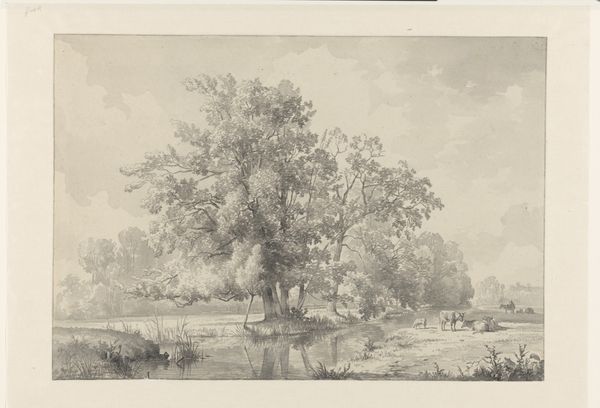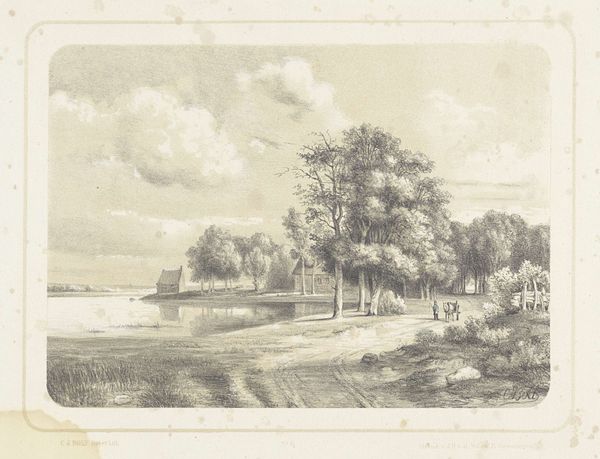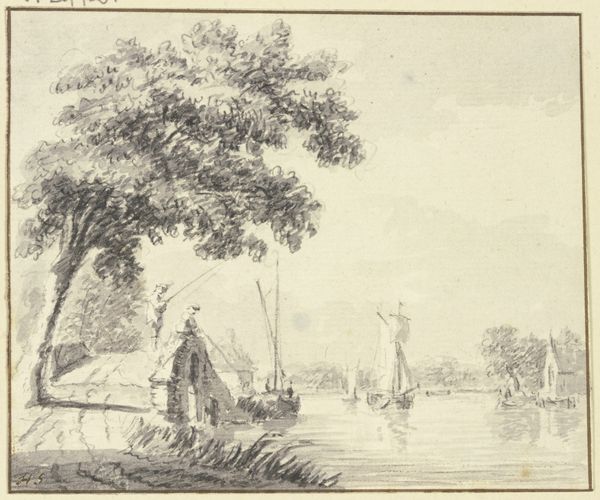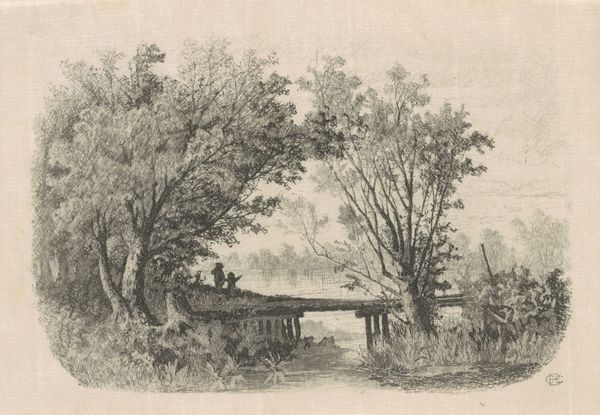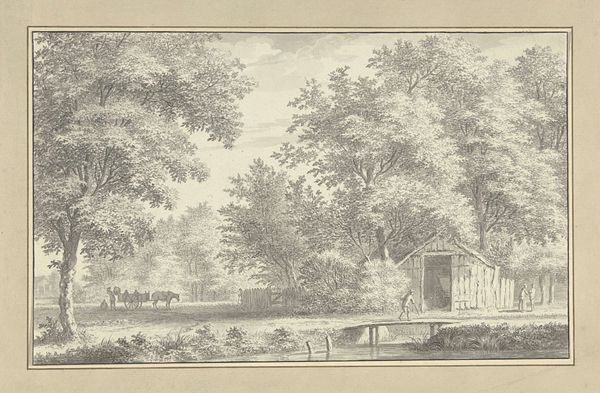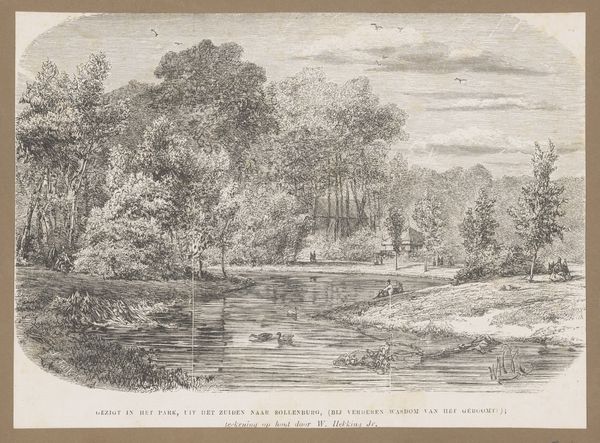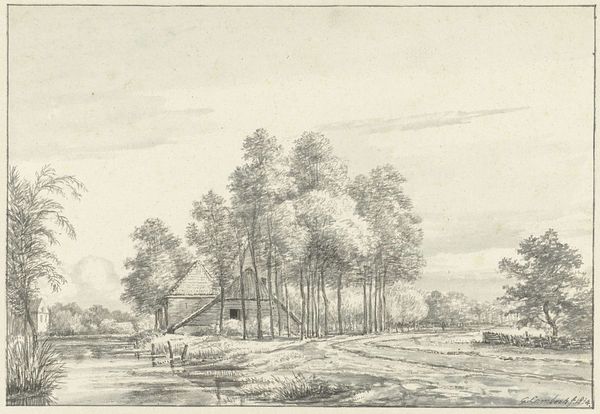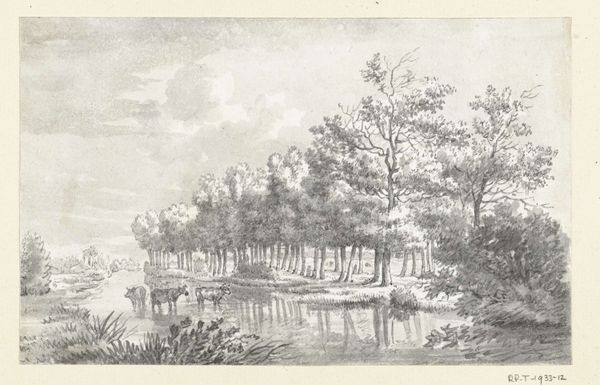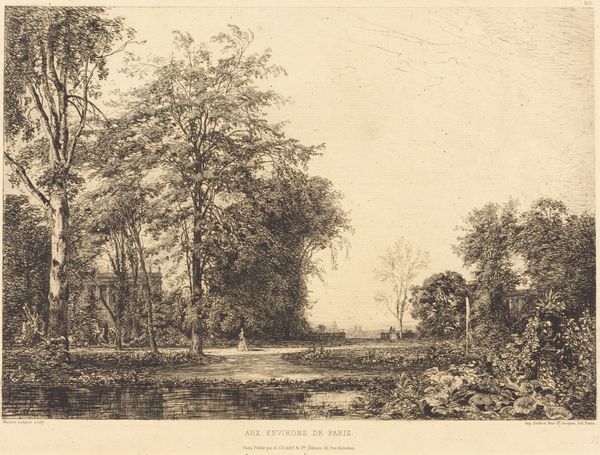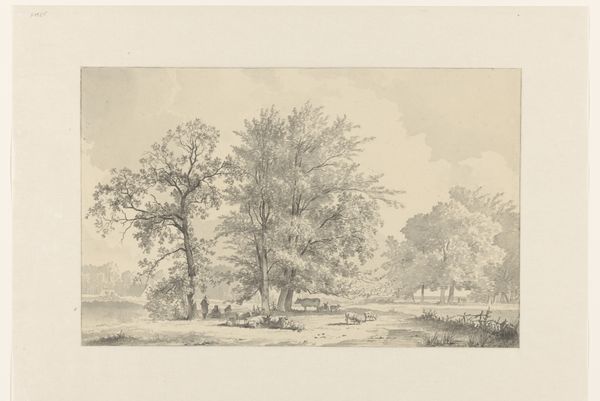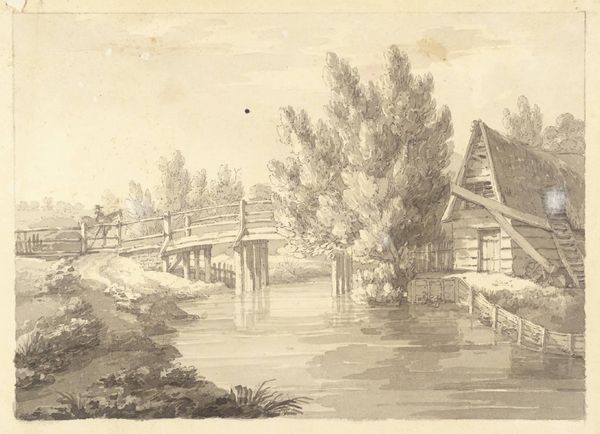
Landschap met vaart en brug, links een jager met hond 1797 - 1870
0:00
0:00
andreasschelfhout
Rijksmuseum
drawing, pencil, graphite
#
pencil drawn
#
drawing
#
pencil sketch
#
landscape
#
romanticism
#
pencil
#
graphite
#
northern-renaissance
#
realism
Dimensions: height 218 mm, width 286 mm
Copyright: Rijks Museum: Open Domain
Curator: What a peaceful scene. This drawing, "Landschap met vaart en brug, links een jager met hond" or "Landscape with canal and bridge, a hunter with a dog on the left" is by Andreas Schelfhout, created sometime between 1797 and 1870. It's currently housed here at the Rijksmuseum. Editor: Yes, there's a serene quality to the composition. The subtle gradations of the graphite create such depth and the layering adds visual complexity, don't you think? I mean, how many distinct values did he pull from a simple pencil? Curator: Indeed, it is tempting to see how Schelfhout carefully used pencil and graphite in service of an emerging urban market for idyllic landscape imagery, and the rising demand in this period for printed art facilitated his process and its popularity. Editor: Right. Let's also focus on the bridge in the middle ground. It mirrors and extends the planes into the horizon which subtly divide the pictorial space, establishing points of stasis and allowing our gaze to travel from one mark to another... almost like language. Curator: He makes marks representing reality, not merely reflecting it. Take the figure of the hunter. In its detail it suggests an interesting contrast in this historical period where elites often engaged in leisure hunting within controlled estates; one sees Schelfhout documenting a particular type of class identity tied up within resource consumption in that particular cultural environment. Editor: You're pointing out the social commentary, very good. The Romantic undertones are worth acknowledging as well: See how light breaks on the canal creating a dynamic yet restrained play between representation and an invitation into this other, perhaps more pure world? The surface creates layers of meaning in ways that I am struggling to capture. Curator: These landscapes were more than simple documents for sale though: their materiality points toward how print-making, and access to landscapes via prints democratized certain romantic notions. It's worth noting how Schelfhout's detailed technique actually translates surprisingly well into mass production through prints—reaching an even wider audience disconnected from the scenes themselves. Editor: That's well observed and changes how I look at it all! Considering it like that it brings new perspectives to our viewers and allows new ways to analyze the composition from an intrinsic design element to one of function. Thank you. Curator: And thank you! Examining the social function this landscape offers through prints certainly gives context to the viewing experience.
Comments
No comments
Be the first to comment and join the conversation on the ultimate creative platform.
